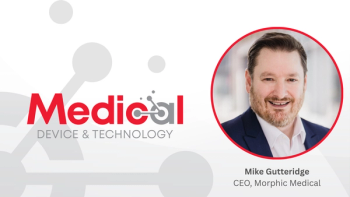
Solving physician burnout solution requires system-wide changes
While there are some changes physicians can make at the personal and practice level, it requires system-wide transformation to alleviate burnout.
Physicians and patients feel the consequences of clinician burnout, but it’s not a battle they can fight alone.
Christine A. Sinsky, MD, a board-certified internist, vice president of professional satisfaction at the American Medical Association (AMA), director of the American Board of Internal Medicine (ABIM) and chair of the Board of Trustees for ABIM, said the AMA began working earnestly on the issue of physician burnout in 2012, convening a group of chief executive officers from some of the largest healthcare systems in 2016 to raise awareness of the issue as a public health crisis.
The goal, she said, is to advance the understanding that burnout is primarily a systems problem, not an individual problem, so the focus should be on fixing the workplace rather than fixing the worker.
“The fact that the burnout rate among U.S. physicians dropped modestly in 2017 from a peak in 2014 may indicate that growing national efforts to address physician burnout are on the right track, but more work is needed to achieve meaningful change,” Sinsky said. “Addressing the crisis requires continued investment from hospitals and health system in a comprehensive strategy that targets barriers to efficiently providing patients with high-quality care as the primary driver of physician burnout.”
An energized, engaged and resilient physician workforce is essential to reaching national health goals and is well worth an investment from the health system, Sinsky said. The cost of clinician burnout is significant, she said, and there is a considerable return on investment for systems that invest in programs to address burnout. The AMA offers a cost of burnout calculator based on existing research data, she said.
Recognizing the importance of addressing burnout is a hurdle of its own, but creating a roadmap for change is sometimes an even greater challenge.
Jay Bhatt, DO, chief medical officer and president and chief executive office of the health research and executive trust at the American Hospital Association (AHA), said it’s critical to create an infrastructure for wellbeing that takes into account existing attitudes, beliefs, and gaps in the system. Wellbeing must be measures in a continuous manner, with interventions designed in a way that addresses those gaps while keeping in mind a health system’s current capabilities.
Team-based care is one intervention that has been successful in streamlining the administrative burden that contributes to burnout, but it takes support at the system level and cultural changes to achieve success.
“Team-based care isn’t intuitive. It requires intentionality and systems and mindset for that to happen,” Bhatt said. “We want well-intentioned clinicians that want to take care of patients and families.”
Physicians need better training on management and delegation, and having a sense of community among clinicians can help in this regard. Having a space for physicians to support each other and offer camaraderie is a thing of the past in many institutions, Bhatt said. Clinicians have lamented having a space to share thoughts and debate cases with out clinicians, he said.
“Those places create community and space for team-based care,” Bhatt said.
There also needs to be work at the national level to support policy changes that can aid in reducing burnout, Bhatt said.
“There has to be a balance between the information that needs to be documented so that care can be provided and a clinician’s time,” Bhatt said. “There are opportunities to reduce burden and put patients above paperwork.”
Bhatt said there is some headway being made in conversations with CMS in terms of documentation requirements and allowing team members to contribute to that process.
While there is still a long way to go, Bhatt said these discussions are a sign that physician burnout is on the radar at the national level and changes are on the horizon.
“We are also seeing that the flexibility in the way some organizations are getting systems to tackle documentation redesign,” he said. “Some of what we’re seeing from a policy perspective is aligned with reducing regulatory burden.”
Newsletter
Stay informed and empowered with Medical Economics enewsletter, delivering expert insights, financial strategies, practice management tips and technology trends — tailored for today’s physicians.



















